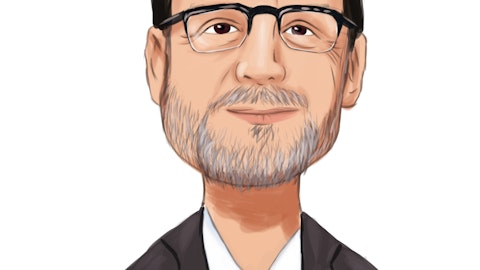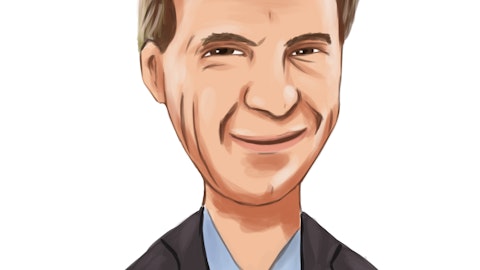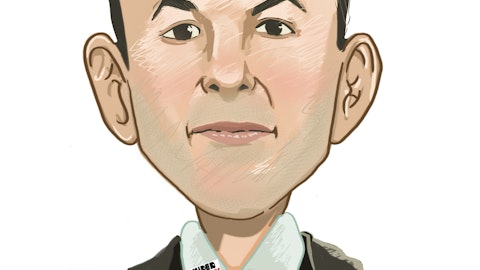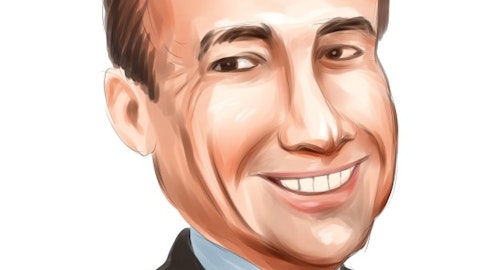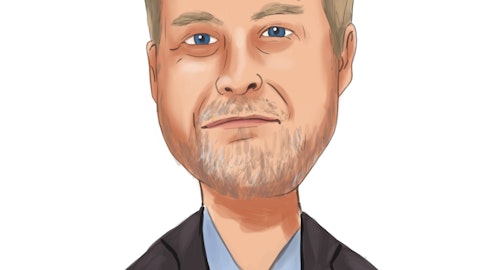Stephen Nolan: I think Gautam, part of what happened here is as Saffron put together thier demand plan for us for 2022, they had anticipated entering 2023 at our higher production rate for Boeing and Airbus on their aircraft. And so they had us probably produce more than they might have done had they known what that actual profile would look like as Boeing and Airbus ramped up. And so I think they’re in a situation where they may have a little more of our product than they’d anticipated and therefore, we’ll burn through some of that inventory in 2023. And so they may end up €“ and we don’t full insight Gautam, I’ve seen the public statements, you have to €“ I don’t have additional insight into their production rates, but they may produce more engines in 2023 than we deliver certainly produce components in 2023.
Gautam Khanna: Okay. I mean, do you anticipate at any point a sequential dip or are you getting destocked or just held at a flat rate in the guidance that you’ve embedded in Q1, Q2, et cetera?
Stephen Nolan: Look, it bounces around always quarter-to-quarter, there’s rises and dips. Certainly, as we look for the year, and as Bill mentioned, we endeavor to the great extent possible to level load across all four quarters. There’s no material dip. It’s rough. It’s effectively flat from 2022 to 2023. But quarter-to-quarters a little noisy depending on how many holidays and other things in any given quarter, but roughly flat.
Bill Higgins: Yes. As I said, we try to plan the year working with Saffron setting a level loaded plan for the year. So if the 737 MAX goes from the low 30s per month to the high 30s per month, that might change. But right now, we’ve planned it as it is for the year, and we’ll come back later in the year and adjust it if things pick up. But we’re not expecting things to do.
Gautam Khanna: Would you be willing to opine on what your unit shipments were by 1A/1B in 2022, 1,500 in aggregate or
Stephen Nolan: Yes. We haven’t in the past nor are we going to get into right now disclosing production rates or delivery volumes. What one of the reasons being our customer has asked us to not discuss, what we’re charging per ship set? We do disclose the full revenue obviously for the program, given its materiality to the company. We don’t want to get into giving exact ship set quantities because it’s pretty easy to calculate the price at that point.
Bill Higgins: Yes. I think when Saffron reports in the next few days, you can listen to what they say about engine production. We’re closely sync with them.
Gautam Khanna: Yes. Last one for me, in your opening remarks, I think you made reference to some unnamed aerospace programs where you picked up some content. Are these new programs or are these €“ is this gaining additional content on existing in production programs? If you could at least give us some color around
Bill Higgins: There actually new programs with new customers. So as you think about the customers that we talk about, hear us speak about with Safran or or was it €“ we work on the hypersonics and a few different programs anyway. We €“ there’s a number of customers we are working with in both commercial and defense that are new customers and new programs.
Stephen Nolan: Yes. And in some cases, Gautam, it would be a program that’s certainly on a platform that is new for us, but might be an in production platform. So in some cases, they are new programs, genuinely new in some, it’s a switch over from an incumbent to us on an existing
Bill Higgins: Yes, they’re not new aircraft to put it that way.
Gautam Khanna: Okay. I appreciate it. Thank you guys.
Operator: The next question is from Steve Tusa from J.P. Morgan. Please go ahead.
